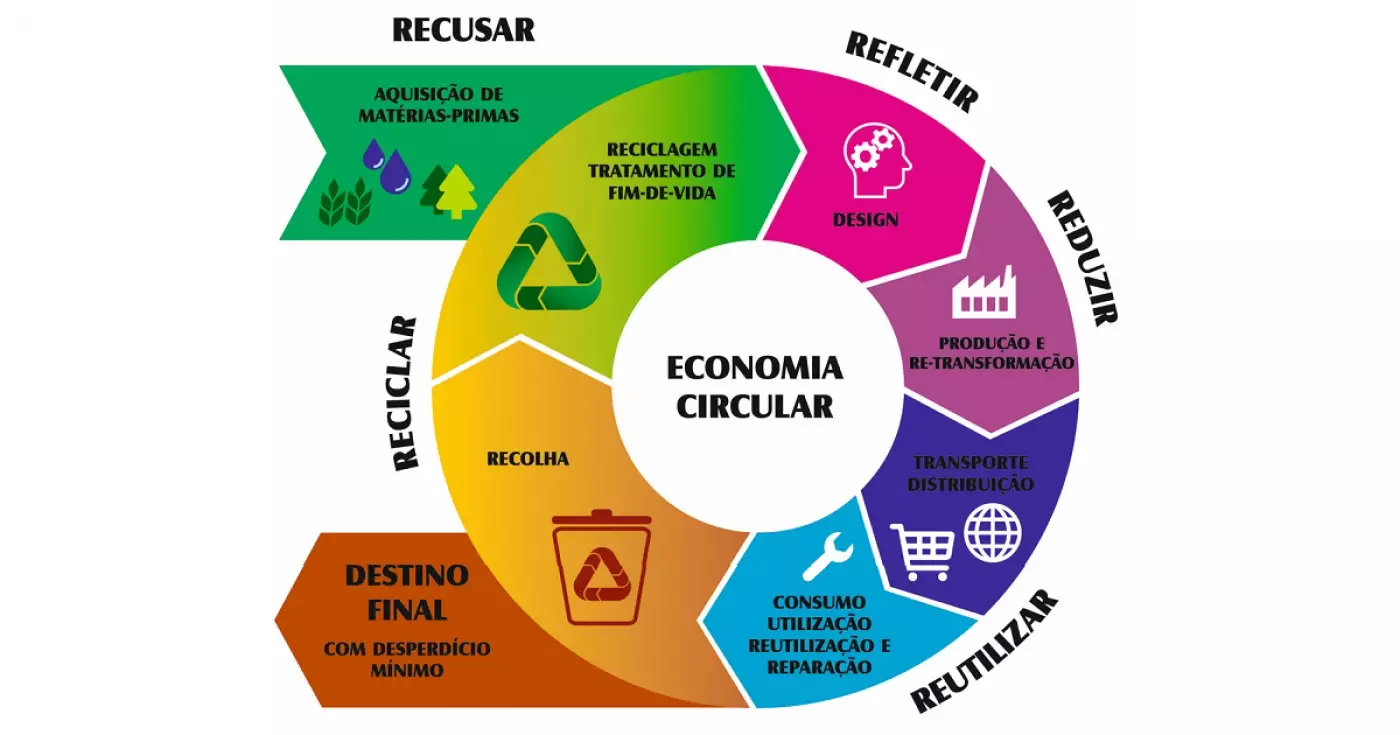In recent years, the concept of Circular Economy has gained prominence in the world of economic and business sciences . It is an approach that aims to transform the way we produce, consume and dispose of goods and services, with the aim of promoting environmental and economic sustainability. In this analysis, we will explore what the circular economy is, its challenges and opportunities for a more sustainable future.
What Is Circular Economy?
The circular economy is an economic model that opposes the traditional linear system of production and consumption, in which we extract natural resources, produce goods, use these goods and, finally, discard waste. Instead, the circular economy seeks to close this loop, keeping products, materials and resources in use for as long as possible and reducing waste as much as possible.
This approach is based on three fundamental principles:
- Sustainable Design: Products are designed with the idea of being durable, recyclable and easy to maintain. The emphasis is on reducing waste from the start.
- Extended Life Cycle: Products are reused, repaired and remanufactured whenever possible, prolonging their life cycle and reducing the need for new raw materials.
- Recycling and Regeneration: When a product reaches the end of its useful life, its materials are recycled and reintegrated into the production chain, reducing the extraction of natural resources.
Circular Economy Challenges
Despite its promise, the adoption of the circular economy faces a number of challenges. One of the main ones is resistance to change on the part of companies and consumers. Transitioning to a circular model often requires upfront investments and an overhaul of traditional business practices.
Another challenge is the lack of adequate infrastructure for recycling and reuse in many regions of the world. This limits the ability to effectively implement the circular economy at scale.
Additionally, the complexity of the global supply chain makes it difficult to track and manage products throughout their lifecycle, especially when it comes to electronics and other consumer goods.
Circular Economy Opportunities
Despite the challenges, the circular economy offers a number of significant opportunities. One of them is the reduction of environmental impact. By minimizing the extraction of natural resources and the generation of waste, the circular economy contributes to the conservation of ecosystems, the reduction of pollution and sustainability goals.
Furthermore, the circular economy can create new sources of employment and stimulate economic growth. The reuse, recycling and remanufacturing of products can generate opportunities in sectors such as repair, reverse logistics and sustainable design.
Another opportunity is in promoting innovation. The search for creative solutions to extend product life and reduce waste can lead to significant technological and business advances.
Successful Case Studies
Several case studies highlight the potential of the circular economy. Companies like Patagonia, an outdoor clothing brand, have implemented programs to repair and reuse used clothing. The company repairs damaged products and offers second-hand clothing, encouraging customers to extend the life of their clothing.
Electronics manufacturer Philips has launched a Light as a Service program where customers pay for lighting as a service instead of purchasing light bulbs. This encouraged the company to design long-lasting and energy-efficient lighting products.
The Importance of Education and Awareness
For the circular economy to become a reality, it is essential to increase awareness and education on the subject. This includes educating businesses, governments and consumers about the benefits of the circular economy and practical steps to implement it.
Public policies also play a fundamental role in promoting the circular economy. Tax incentives, environmental regulations and investments in recycling infrastructure can accelerate the adoption of this approach.
Conclusion
The circular economy represents a fundamental shift in the way we think about production, consumption and waste. It offers a sustainable approach to solving some of the biggest environmental and economic challenges we face. While transitioning to a circular model can be challenging, opportunities to create a more sustainable and prosperous future are abundant. It’s time to embrace the circular economy revolution and work together to build a better world for future generations.









